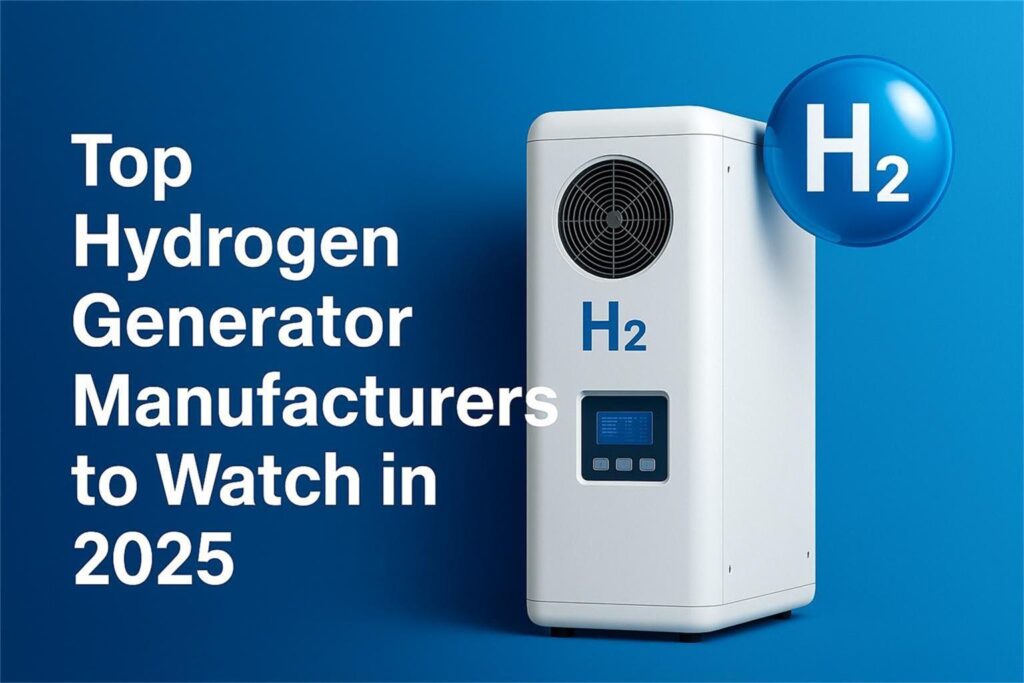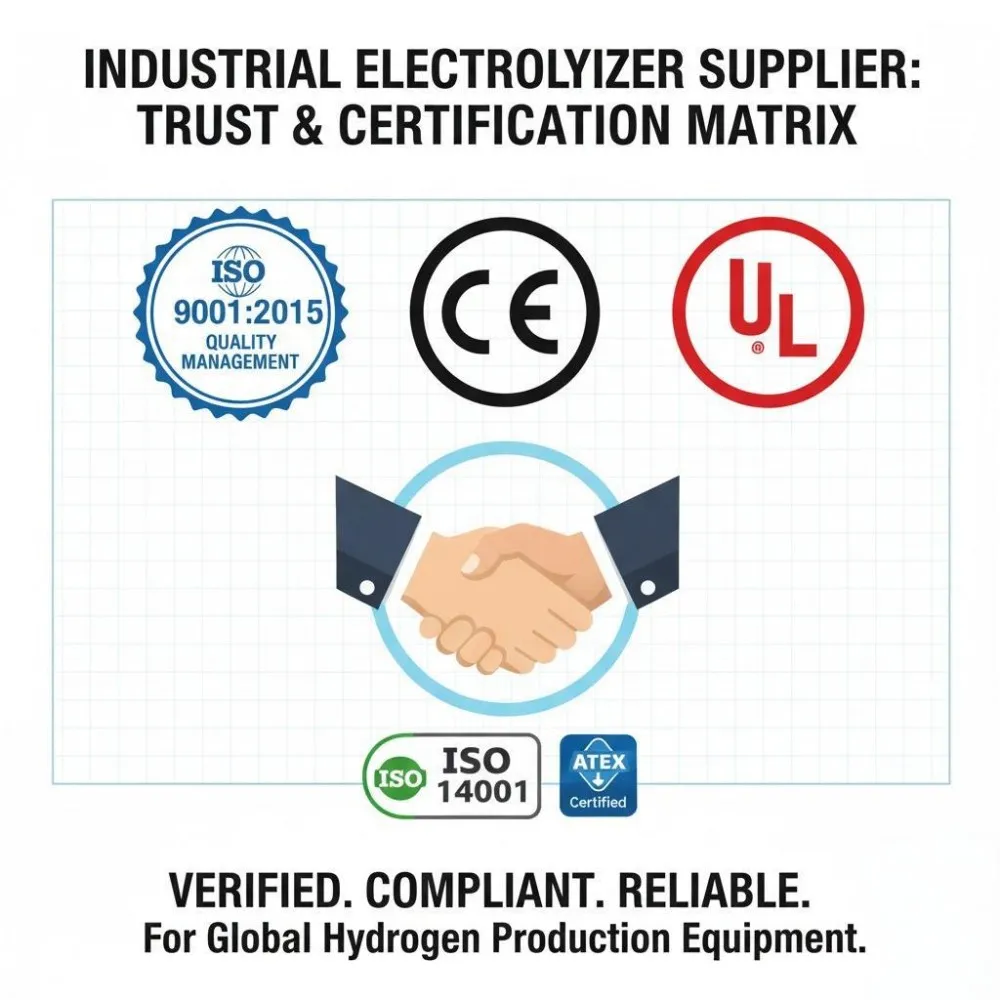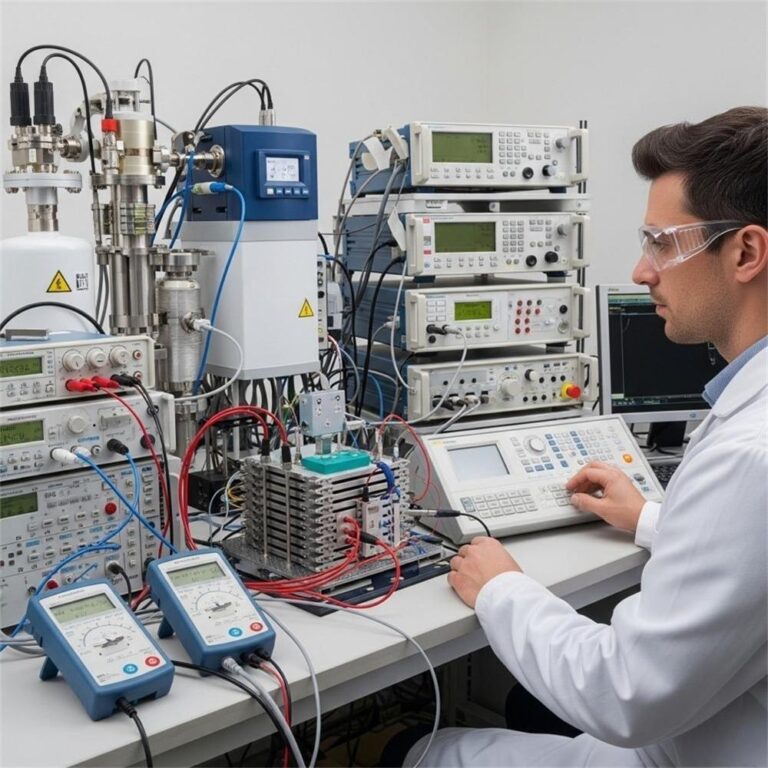Top Hydrogen Generator Manufacturers to Watch in 2025 Find out who the top hydrogen generator manufacturers are. Compare strengths, innovations, and market shares to make smarter sourcing decisions.
Introduction
The global hydrogen generator market is surging, with projected valuations topping billions by 2025. Clean hydrogen is increasingly vital across industrial, transportation, and energy sectors. At the core, PEM (Proton Exchange Membrane) hydrogen generators deliver ultra‑pure hydrogen with high efficiency and fast response—ideal for renewable energy integration and zero‑emission operations. This article highlights the top hydrogen generator manufacturers, focusing on PEM technology, innovation, and reliability. Companies like Hele Titanium Hydrogen offer advanced PEM generators built for durability and efficiency—view their offerings here: Products.

Criteria for Selecting Top Manufacturers
Our methodology emphasizes:
- Market share and visibility—how widely deployed are their systems.
- Technological innovation, e.g. PEM stack efficiency, modular design, materials.
- Product range—from small-scale to industrial electrolyzers.
- Global reach & support, including after‑sales service—see Service.
- Customer feedback and sustainability commitments.
After‑sales support is key—manufacturers like Hele Titanium Hydrogen emphasize service reliability and responsive global support.
Top Hydrogen Generator Manufacturers – Profiles
Nel Hydrogen (Norway)
Overview: Established in the 1920s, Nel is a trusted hydrogen industry pioneer. Strengths: Leading alkaline and PEM electrolyzer provider, with >20% global share in electrolyzers and over 50% in alkaline units (heletitaniumhydrogen.com, Reddit, heletitaniumhydrogen.com, Fortune Business Insights). Product Line: MC250/MC500 modular alkaline systems and high‑pressure PEM series for fueling stations and industrial use (– Minnuo, PW Consulting). Innovation: Known for robust modular design and high system efficiency (~75–78%) (Global Growth Insights, – Minnuo). Market Position: Among the top on Guidehouse Insights’ leaderboard with Plug Power and ITM Power (prnewswire.com, guidehouseinsights.com). Weaknesses: Large-scale PEM systems may be pricier; alkaline systems suited for certain applications.
ITM Power (UK/Germany)
Overview: UK‑based PEM specialist with world’s largest PEM electrolyzer factory in Sheffield (~1 GW/yr) (de.wikipedia.org, PW Consulting). Strengths: Modular, scalable PEM systems like NEPTUNE and TRIDENT platforms serve industrial and renewable integrations. Product Line: NEPTUNE V 5 MW containerized units, up to 100 MW projects (e.g. REFHYNE II project in Germany) (en.wikipedia.org, PW Consulting). Innovation: Reduced precious metal usage (40% less iridium) while maintaining performance; rapid deployment modules (en.wikipedia.org). Market Position: Leader per Guidehouse; strong European contracts with Shell, Yara, Sumitomo (prnewswire.com, en.wikipedia.org). Weaknesses: Primarily Europe‑centric service footprint (growing).
Plug Power (USA)
Overview: U.S. pioneer in integrated hydrogen solutions spanning fuel cells and PEM hydrogen generators. Strengths: Offers end‑to‑end hydrogen ecosystem: PEM generators, fueling infrastructure, and GenDrive fuel cells (heletitaniumhydrogen.com, Fortune Business Insights). Product Line: GenFuel PEM generators optimized for logistics use cases (e.g. forklift fueling) with cloud diagnostics (heletitaniumhydrogen.com, heletitaniumhydrogen.com). Innovation & Expansion: Secured $1.66B DOE loan to build multiple green hydrogen plants producing 45 tons/day; targeting new U.S. hubs (timesunion.com, Fortune Business Insights). Market Position: Ranked as top electrolyzer vendor by Guidehouse; strong client base (Amazon, Walmart) (prnewswire.com, Reddit). Weaknesses: Financially reporting losses; growth dependent on policy stability—may face demand variability (marketwatch.com, barrons.com).
Siemens Energy (Germany)
Overview: Energy‑infrastructure leader, spun off from Siemens in 2020, with deep expertise across energy systems. Strengths: Industrial‑scale PEM electrolyzers, robust service packages, integration with turbines and gas infrastructure (Fortune Business Insights, – Minnuo). Product Line: Silyzer 300 (6 MW), Hyflex® systems for co‑firing hydrogen with gas turbines; suitable for 50–500 MW projects (– Minnuo, PW Consulting). Innovation: High‑efficiency (~75‑80%), cold‑start times under 5 minutes; turnkey solutions for industrial decarbonization (– Minnuo, Fortune Business Insights). Market Position: ~17% share of global electrolyzer market; among top players per industry analyses (Global Growth Insights, Fortune Business Insights). Weaknesses: High CAPEX projects; best suited for large clients with in‑house project teams.
Hele Titanium Hydrogen (China / Global)
Overview: A rising leader in PEM hydrogen generators offering titanium‑constructed systems with global service. Strengths: Building generators with low energy consumption, high uptime, remote monitoring features; proven reliability for fuel‑cell vehicle stations (heletitaniumhydrogen.com). Product Line: Range of PEM models tailored for localized and industrial use—details available here: products. Innovation: Emphasis on durable titanium materials, efficient PEM designs, integrated IoT diagnostics. Global Reach: Supports international customers with responsive after‑sales via their service page. Weaknesses: Smaller global footprint versus legacy giants—but rapidly growing.
Comparative Analysis
| Manufacturer | Technology | Capacity Range | Efficiency (%) | Applications | Price & Service |
|---|---|---|---|---|---|
| Nel Hydrogen | PEM & Alkaline | <1 MW to >20 MW | ~75–78 | Industrial, refueling | High, with modular support plans |
| ITM Power | PEM Modular | 5 MW to 100 MW+ | ~75–80 | Renewables-linked, ammonia | European service network |
| Plug Power | PEM + Fuel-cell ecosystem | 5–25 MW regional plants | ~70–78 | Logistics hubs, mobility | Integrated solution packages |
| Siemens Energy | Industrial-scale PEM | 50–500 MW+ | ~74–80 | Utility, large industrial | Premium turnkey + service |
| Hele Titanium Hydrogen | Titanium PEM systems | Small to mid-scale units | ~70–80 (optimized) | Localized refueling, demo | Competitive, responsive support |
Future Trends in Hydrogen Generator Manufacturing
- Renewable Integration: Technology optimized for variable solar/wind inputs via fast-start PEM systems with AI‑diagnostic monitoring (en.wikipedia.org, Global Growth Insights, heletitaniumhydrogen.com, theaustralian.com.au, investors.com, heletitaniumhydrogen.com).
- Modular Scaling: Shipping container modules allow rapid deployment and flexibility in capacity.
- Cost Reduction: Focus on reducing precious metal load (e.g., iridium) and system-level efficiencies to bring $/kg H₂ costs down (Global Growth Insights).
- Market Growth: Expansion in transportation, industrial feedstocks (ammonia, methanol), and energy storage applications as hydrogen hubs expand.
Making the Right Sourcing Decision
Choosing the right manufacturer depends on:
- Your application (e.g. fueling station, industrial plant, mobility logistics).
- Capacity needs and scalability plans.
- Budget & pricing models.
- Service & maintenance requirements, including rapid support turnaround.
For tailored advice, reach out to Hele Titanium Hydrogen: 📧 heletitaniumhydrogen@gmail.com 📱 WhatsApp/Phone: 086‑13857402537 Or visit their Contact Us page.
FAQs
1. What is a hydrogen generator? A device that produces hydrogen gas—typically via water electrolysis using electricity. PEM systems use a solid polymer membrane for clean, high‑purity output.
2. How does a PEM hydrogen generator work? Water is split into hydrogen and oxygen using electricity across a proton exchange membrane. PEM delivers fast response, compact footprint, and ultra‑pure hydrogen (≥99.999%).
3. What are common applications? Applications include industrial hydrogen supply, fuel‑cell vehicle refueling, backup power, and integration with renewable energy—on-site or distributed.
4. Why choose hydrogen generators over other technologies? Advantages include zero‑carbon emissions, modular scalability, rapid startups/shutdowns, and compatibility with renewables.
5. How much does a hydrogen generator cost? Prices range from about $800–$1,500 per kW for industrial PEM systems; smaller modular units may range $75,000–$250,000 depending on specification and features.
6. Where can I buy a hydrogen generator? You can source from leading manufacturers like Nel, ITM Power, Plug Power, Siemens Energy—or contact Hele Titanium Hydrogen directly via their website for inquiries.
Conclusion
As hydrogen demand escalates, top players like Nel Hydrogen, ITM Power, Plug Power, Siemens Energy—and rising innovators like Hele Titanium Hydrogen—are setting the standard in PEM hydrogen generation. Evaluate providers based on technology, scale, and support capability.
For expert guidance tailored to your needs, contact Hele Titanium Hydrogen at heletitaniumhydrogen@gmail.com or call 086‑13857402537 and visit their Contact Us page. Explore their FAQ page for additional insights.







